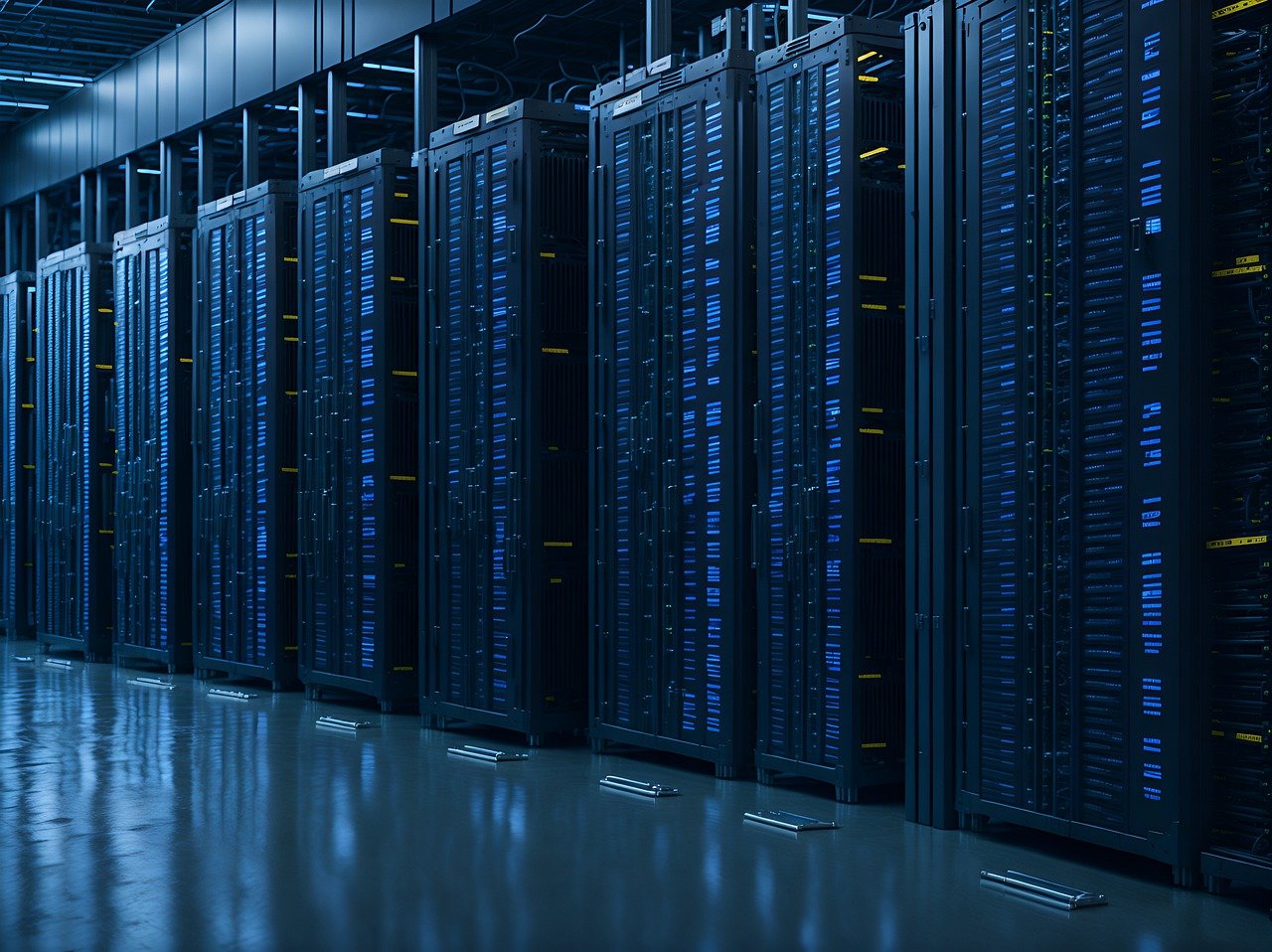
Why do data centers need better cooling?
Data centers are the foundation of digitalization. These facilities are the physical locations that hold the servers used for AI processing and cloud computing. Skyrocketing demand for AI is resulting in a race to build new data center capacity. However, today’s data centers are an order of magnitude larger than the data centers of a few years ago and driving up U.S. power demand. ADI projects data center power demand to grow exponentially and account for over 12 percent of total U.S. power demand by 2030.
Powering the massive data centers used for training AI models can be quite expensive, especially if using renewable electricity. This has resulted in many data center operators honing in on efficiency to minimize power consumption. For most data centers, this means reducing the amount of energy used for cooling servers. Cooling systems are often the second largest consumer of electricity within data centers, second only to the IT equipment itself. Data centers need to keep servers cooled to maintain optimal performance and prevent damages to IT equipment related to overheating.

Figure 1. Share of data center energy consumption by equipment type
Data center cooling technologies
Data center cooling needs have traditionally been met using air-cooling systems. As we mentioned previously, newer data centers have much higher capacity requirements resulting in more densely packed servers. With less room for proper airflow, typical air-cooling systems become much less efficient. This has resulted in new cooling technologies being developed and implemented to reduce data center power needs.

Figure 2. Average data center rack density and share of high-density racks
Of the new technologies available, evaporative cooling, direct-to-chip liquid cooling, and immersion liquid cooling stand out for their unique benefits and applications:
1. Evaporative cooling systems are the most similar to traditional air-cooling systems and is the cheapest to install of the three technologies. These systems draw in hot air from the data center like a traditional air-cooling system, but instead of expelling the air to the outside they bring it to a cooling tower. The air is cooled by drawing it through absorbent pads in the cooling tower where water undergoes a phase change from liquid to gas, absorbing energy from the air and decreasing its temperature.
2. Direct-to-chip liquid cooling systems reduce energy consumption even more than evaporative cooling systems but come at a higher cost. A liquid coolant is brought into direct contact with critical server components via a network of tubes. This targeted approach helps data centers operate at optimal performance levels while greatly reducing energy consumption compared to air-cooled systems.
3. Immersion liquid cooling is available in single-phase and two-phase systems. In either style, the server’s electronic components are completely submerged into a bath of non-conductive liquid coolant that is kept at a constant temperature. Single-phase immersion cooling systems use a single-phase liquid like mineral oil that is inexpensive but can make removing equipment for maintenance difficult. Two-phase systems use special coolants with low boiling points and evaporate quickly when removing equipment for maintenance. However, these coolants are much more expensive and require more complicated equipment due to the phase change. While immersion cooling systems offer the best energy efficiency, they come at a steep cost and often take up space in the data center that could be used to house more servers.
Conclusion
Data center operators have several options when it comes to cooling and must consider what kind of system is best for their facility’s needs. Evaporative cooling uses less energy and costs less to operate than traditional air-cooling systems, making it a great option for data centers looking to improve energy efficiency. Direct-to-chip cooling systems offer even better energy efficiency and are a practical solution for data centers in need of higher cooling capabilities or looking to minimize energy consumption. While immersion cooling systems provide top tier performance, they are not practical for most applications and best left for a few niche cases.
There is a limit to how much of a difference improving cooling efficiency can make on overall data center power consumption. However, liquid cooling is becoming more popular with data center operators and have the potential to help minimize data center power consumption through improved performance and energy efficiency.
-Piercen Hoekstra
Contact us to learn more about our work on rising U.S. power demand led by data centers, data center power supply options, and developments in data center energy efficiency.
ADI Analytics is a prestigious, boutique consulting firm specializing in oil & gas, energy transition, and chemicals since 2009. We bring deep, first-rate expertise in a broad range of markets including energy transition and electric utilities, where we support Fortune 500, mid-sized and early-stage companies, and investors with consulting services, research reports, and data and analytics, with the goal of delivering actionable outcomes to help our clients achieve tangible results.
We also host the ADI Forum, one of Houston’s distinguished industry conferences, to bring c-suite executives from oil & gas, energy transition, and chemicals together for meaningful dialogue and strategic insights across the value chains.
Subscribe to our newsletter or contact us to learn more.



















